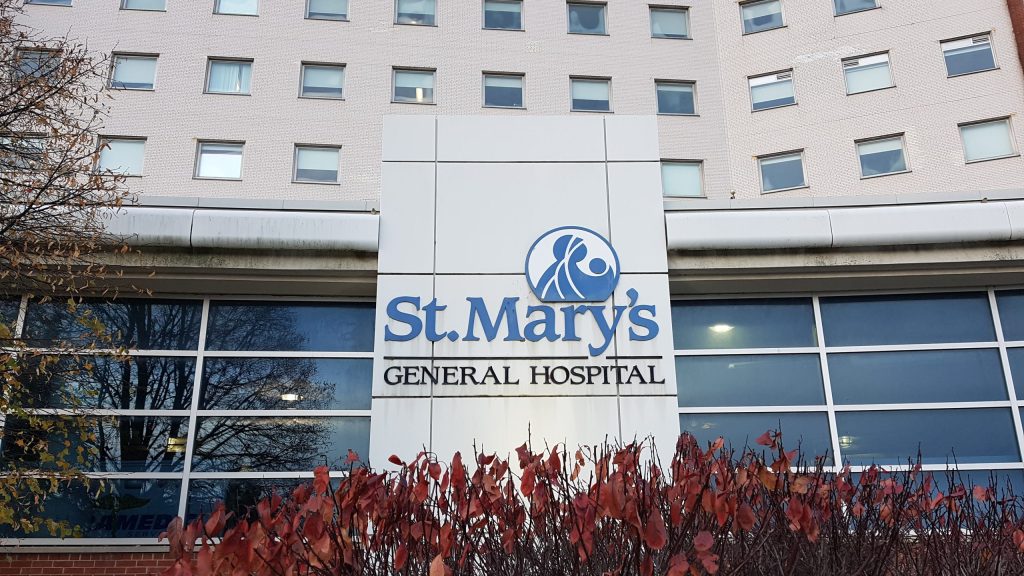Nutrition for Learning combats hunger while helping students succeed
Posted Sep 1, 2021 04:45:00 PM.
For over twenty years, Nutrition for Learning has been trying to combat food insecurity in the region by providing elementary and secondary students with free, healthy food options.
Today, they serve 90 per cent of the elementary and secondary schools in the region. Their programs are universally accessible, meaning anyone, regardless of socio-economic status, can access healthy food at school.
But what really makes them different from other organizations, according to executive director O'Neil Edwards, is their focus on both education and food; on getting students to make healthy choices to support their learning, while eliminating hunger.
“I think that we're helping these young people figure out how to make healthy choices,” Edwards said, adding that knowing how to make healthy food choices can help them long-term with both physical health and cognitive health. “So later on, hopefully they will choose the healthy route versus consistently having a bag of chips and a pop.”
This is important, he says, because research shows students are able to learn better when they are well-nourished.
“Healthy food can build cognitive strength and provide students with the energy they need to learn,” he said.
Yet, according to the Breakfast Club of Canada, one in five children don’t eat breakfast each day. Further, according to a Waterloo Region School Health Report, only one third of adolescents eat enough fruits and vegetables.
“Food security is a hidden sort of thing. When you walk into the grocery store, and you've only got $20 to feed your family, those are some hard choices, ones that people have to make every single day.
“We understand that nutritious food is expensive; it's cheaper to buy pop and a bag of chips than to buy a bottle of water and some carrots,” he said. “Especially [in places like] Waterloo Region, where all you hear about is the fabulous high tech things going on here, you miss the pockets of real food security that are out there.”
That’s where their programs come in.
Through their database system, schools can tell them how many students they have in the school and how much food they need. Once a school makes their order, they have volunteers who package and deliver the food.
Some of the foods they typically supply include apples, Cheerios, yogurt, clementines, bagels and hard boiled eggs, which are all provided by their partners and donors in the community. Most often the food will be in bins in the classrooms for students to access when they need it.
“We know your brain works better on food that releases low energy,” he said, adding that healthy food can make it easier to pay attention.
“And we know that if you're constantly worried about your food security, that's where most of your energy goes from a mental standpoint. And so trying to take that away, and with healthy snacks, really calms people and opens up their opportunity to learn within the classroom.”
He said teachers have noticed a huge difference from having this kind of nutritious food in the classroom, and have reported seeing increased focus and attention of students and better scores in math, reading and science.
Since the pandemic closed schools and prevented them from delivering food directly to classrooms, they have been doing popups in school parking lots.
They would work out a schedule for the popups, which each school would then pass on to their students so they would know when Nutrition For Learning would be there — usually around 10 a.m., which would typically be recess.
Edwards says this service has become even more important throughout the course of the pandemic.
“We were cognizant of the fact that the gap didn't go away — in fact, the need actually increased,” he said.
“Think about everything that has gone up [in price] from a food perspective, and that's taking more out of your livable wage in regards to how you're spending your money. Some people who've lost their jobs, and no matter what assistance you are on, if you've got a family to feed, there's not much left over.”
While their programs typically serve around 2,300 students each day, their community pop ups serve around 500 students daily, with over 40 pop ups. However, Edwards noted that there had been a significant increase in the amount of food distribution throughout the year.
One challenge has been maintaining universal access and accessibility with the pop-ups, as Edwards notes some students and their families have been unable to reach the pop-ups.
“We don't drop things off at their homes, unfortunately. We don't have the resources to do that. But most of the time, though, what we found was that for those who travel is a little bit of a challenge, they will tell someone else, and they pick up stuff for them.”
They are planning to return to their normal programming this year, and are currently working with the school boards to determine a way to do it safely.
Before the pandemic, they had around 300 volunteers helping with packaging and delivering the food. For instance, students at Conestoga College would prepare thousands of food packages for them between classes. They hope to be able to start recruiting more volunteers again once their usual programming resumes.
“So right now we're on track for the new normal. But we are also sort of saying, okay, we have to be ready if we need to pivot and go back to our pop ups.
Nutrition for Learning plans to have a limited offering of food items at all schools from Sept. 7 to Sept. 10, and their full program will resume on Sept. 13.










